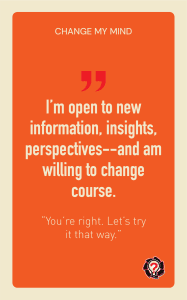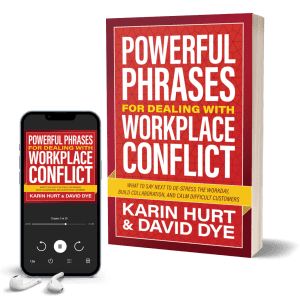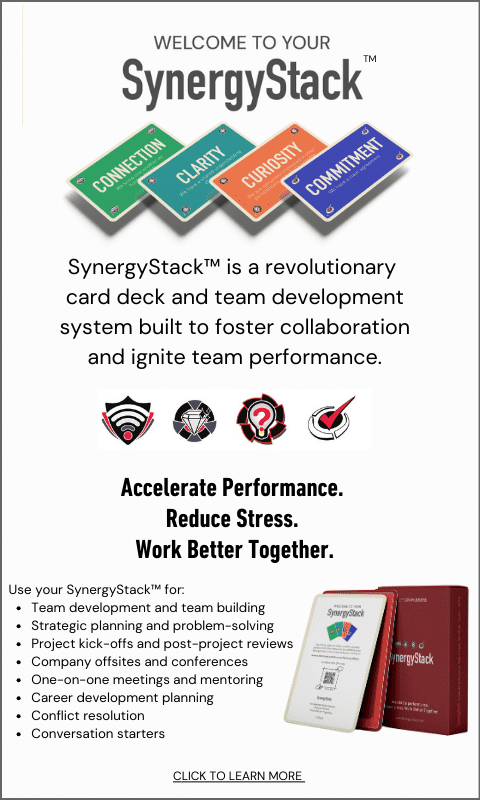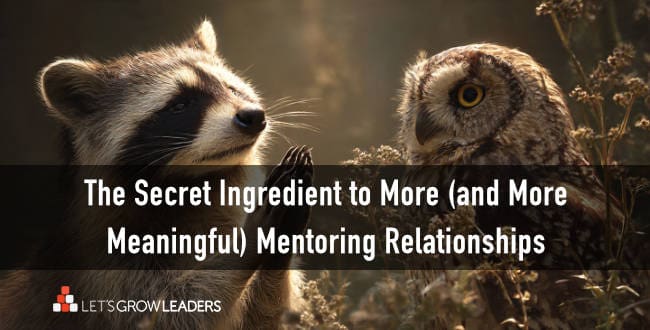 Creative teams stay open to what’s possible and explore alternative perspectives.
Creative teams stay open to what’s possible and explore alternative perspectives.
One of the fastest ways to get to the root cause of a workplace conflict is to show up genuinely curious about the other person’s perspective. Your sincere curiosity helps people feel seen and gives you a better understanding of what it will take to solve a problem.
This is often the hardest part of constructive conflict because you have your point of view for a reason. It’s hard to be curious when you feel angry or disrespected. And yet… the cool thing about curiosity is that when you ask a good question, it automatically helps pull you out of that reactivity. It’s hard to be angry and genuinely curious at the same time.
Great teams stay curious and creative. They show up genuinely interested in other perspectives and what’s possible.
And, curiosity is one of those skills that can feel hard to teach. Do, we’ve curated this list of curiosity habits and resources to make it easier to infuse curiosity into your team’s culture.

Click here to hear more of our thoughts on curiosity and collaboration.
Note: This is part three of our four-part “Better Teamwork” series. You can check out the other dimensions and their powerful habits here.
Part 1: Better Teamwork: 12 Practical Habits to Build Deeper Connection.
Part 2: Great Teams: 12 Practical Collaboration Habits to Create Clarity
Part 4: Create Commitment: 12 Habits that Build Agreement and Accountability
12 Habits to Foster More Curiosity and Creativity on Your Team
1. Seek New Approaches
Habit: I explore possibilities and look for alternative paths to achieve goals.
In today’s fast-paced, uncertain world, it doesn’t make sense to keep doing what you’re doing without serious conversation about whether the status quo still makes sense. Creative teams learn from what’s working (and are honest about what’s not). They’ve got an eye out for new ways of working.
Related Article: 7 Ways to Help Your Team Be More Resourceful
You can download our FREE I.D.E.A. Incubator Guide Here.
2. Challenge Assumptions
Habit: I ask provocative questions to help us think at a deeper level.
This habit is about peeling back layers, not to be contrarian, but to understand deeply and maybe find a better, more effective path.
Here are a few questions to ask to inspire more creativity in your team:
- How would our competitors approach this problem?
- How would we handle this issue if our budget was cut in half?
- What would happen if we did the opposite of our plan?
Related Article: Assumption Busters: 12 Strategic Questions to Propel Your Team’s Strategic Thinking
3. Change My Mind
Habit: I’m open to new information, insights, and perspectives—and am willing to change course
The willingness to change your mind doesn’t signify weakness or indecisiveness; rather, it’s a strength, a testament to your intellectual flexibility and curiosity.
It means being open to new ideas, perspectives, and evidence, even if they challenge long-held beliefs or opinions. In a world brimming with diverse viewpoints and groundbreaking discoveries, the ability to adapt and reconsider is not just beneficial, it’s essential.
Related Article How to Work for an Indecisive Boss
4. Try New Things
Habit: I regularly step into the unfamiliar or uncomfortable to do what we haven’t done before.

Creative teams are willing to experiment. If you want to build this habit on your team, one way to do this is through a “mini personal experiment.” We’re also big believers in trying new things with a carefully measured pilot.
Related Article: HBR How to Scale a Successful Pilot
5. Share Ideas
This habit is about sharing best practices and proactively speaking up to share your ideas, which if you’ve been hanging around us for a while you know we’re all about this.
Habit: I’m on the lookout for new approaches and confidently bring them up
Related Articles: Share Your Ideas: Practical Ways to Ensure Your Voice Is Heard
Psychological Safety: Why People Don’t Speak Up at Work
6. Take Appropriate Risks
(P.S. These habits are all part of our SynergyStack System. Learn more here).
Habit: I make decisions doing the best we can with the information we have.
Related Article/Video: Taking Risks: How to Make it Easier for Your Team to Try New Things
7. Invite Input
Habit: I ask for ideas, information, and perspective.
This is more than saying ideas are welcome, or that you have an open door. What matters most is to make a habit of proactively asking in different ways.
For example, build a cadence of asking for input into your one-on-ones, and executive visits. This is a great place to start.
Related Video: The Secret to Getting Remarkable Ideas You Can Actually Use (Karin Hurt TEDx)
And Article: Empower Your Team to Make Better Decisions
8. Ask First
Closely related to the invite input habit above, this one can be tricky when you’re passionate and have lots of great ideas.
A few Powerful Phrases that come in handy here.
“I’m curious what this looks like from your perspective.” and “Tell me more.”
Habit: Before stating my perspective, I invite others into the conversation.
9. Ask Courageous Questions
 Habit: I ask practical, specific questions that make us better.
Habit: I ask practical, specific questions that make us better.
We love Courageous Questions because they are easier to answer and get your team talking. Inviting your teammates to consider ONE way or ONE idea to do something specific is a great way to encourage your team to be more creative and solutions-focused.
Related Article: Courageous Questions: How to Make It Easier to Get Better Insights
10. Learn from Experience
Habit: I pay close attention to what we did before and help our team to do better next time.
One of our favorite ways to do this is with a “post-project celebration” where you ask strategic questions to celebrate success and learning.
Related Articles: Beyond Post Mortems: A Post-Project Celebration
From Fiasco to Opportunity: How to Reframe a Team Setback With Better Words
11. Investigate How Things Work
Habit: I ask “why” repeatedly to understand how our organization does what it does.
It’s amazing to see the lightbulbs go off in our training programs when people get a chance to ask some of the “why” questions they are holding back. Take time to slow down and make it more than “okay.” Expecting people to ask the “whys” behind the “what’s” is a fast track to more creative teams.
12. Walk in Others’ Shoes
Habit: I want to understand your perspective and what my decisions and actions mean for you.
We’re big fans of a good field trip (literal or figurative) where you work to understand the inputs and outputs of processes and decisions. This is particularly vital in a matrix organization.
Related Article: Matrix Organization: Powerful Questions to Reduce Angst and Build Trust
These twelve habits are a great place to start when working to build more creative teams, foster connections, and make work, work better. We’d love to hear from you about your best practices.
What habits are making the biggest difference as you work to take your team to the next level?

Want to de-stress your workday, build collaboration, and calm difficult customers?
Our new book, Powerful Phrases for Dealing with Workplace Conflict: What to Say Next to Destress the Workday, Build Collaboration, and Calm Difficult Customers has 300+ practical techniques and useful words for better collaboration, You can take a quick peek at some of our new conflict and collaboration programs here.








0 Comments